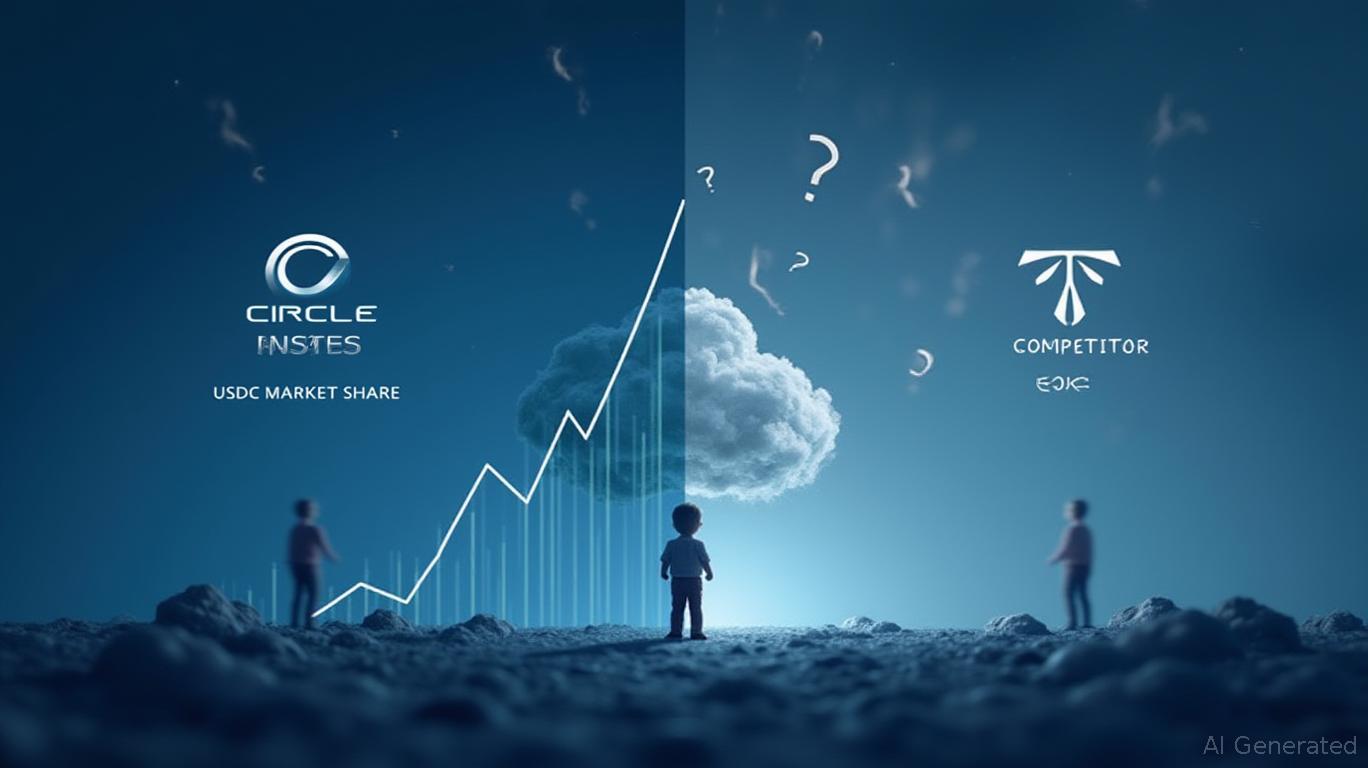Circle's Regulatory Tailwind vs. Competitive Crosswinds: Navigating Stablecoin Volatility
The stock of
(CRCL) has been a rollercoaster in 2025, swinging between optimism over stablecoin regulatory clarity and fears of intensifying competition. After soaring 20% in late June on news of Senate passage of the GENIUS Act—a bill regulating payment stablecoins—the stock retreated as House lawmakers raised concerns over competing legislation. This volatility underscores a critical question for investors: Can Circle sustain its leadership in the stablecoin market as regulatory tailwinds collide with competitive headwinds?
The Regulatory Tailwind: GENIUS Act's Clear Rules, Unclear Path
The Senate's bipartisan approval of the GENIUS Act in June marks a pivotal shift for stablecoins. The bill mandates that issuers maintain 1:1 reserves in high-quality assets, undergo monthly audits, and comply with anti-money laundering (AML) rules—a framework that Circle's USD Coin (USDC) already meets. This regulatory clarity has fueled investor confidence: CRCL's stock has risen 330% since its 2021 IPO, with a 20.4% surge alone following the Senate vote.
However, the path to final implementation remains uncertain. The House's competing STABLE Act proposes stricter federal oversight, including a two-year moratorium on algorithmic stablecoins and expanded FinCEN authority. While the Senate's version allows smaller issuers to opt for state regulation, House lawmakers insist on uniform federal standards. With Congress facing a July recess, reconciling these differences could delay the law's passage into 2026—prolonging uncertainty for issuers like Circle.
Circle's Strategic Edge: Compliance as a Competitive Weapon
Circle's “regulatory-first” approach has positioned it to capitalize on GENIUS's requirements. Its $55 billion USDC supply, second only to Tether's USDT, is backed by 100% reserves in cash and Treasury bills, with monthly audits by firms like Grant Thornton. Partnerships with Fiserv and BlackRock further embed USDC into mainstream finance, enabling real-time cross-border payments for banks and merchants.
The firm's institutional focus is paying dividends. Clients like Walmart and Microsoft are piloting USDC for global transactions, while its Circle Reserve Fund (USDXX) offers investors a SEC-registered vehicle to track USDC reserves. These moves have attracted institutional capital, with $7 billion now held in Coinbase Custody accounts linked to USDC.
The Crosswinds: Competition and Regulatory Gaps
Despite its strengths, Circle faces mounting risks. Tether (USDT)—long under scrutiny for reserve transparency—still commands a 45% market share and has shown resilience in litigation. Smaller issuers like Paxos (PAXG) and BUSD are also vying for market share, leveraging discounted pricing or decentralized platforms.
The House-STABLE Act's proposed moratorium on algorithmic stablecoins could indirectly benefit USDC, but it also risks creating a regulatory vacuum. Tether's recent pivot to “hybrid reserves” (mixing Treasuries with corporate bonds) highlights how competitors may exploit loopholes, squeezing Circle's premium on transparency.
Investment Considerations: Ride the Wave or Anchor in Caution?
Circle's valuation hinges on two variables: the speed of regulatory finalization and its ability to defend market share.
Bullish Case:
- If the GENIUS Act becomes law by year-end, Circle's compliance edge will solidify USDC's position as the default institutional stablecoin. A $2 trillion stablecoin market by 2028 (per industry estimates) could drive exponential revenue growth.
- Its partnerships with Fiserv and BlackRock could unlock new revenue streams, such as fee-based services for institutional clients.
Bearish Risks:
- House delays or stricter terms could force Circle to divert resources to lobbying or compliance, compressing margins.
- Tether's persistence and regulatory arbitrage in emerging markets (e.g., UAE, Singapore) threaten USDC's dominance.
Conclusion: A Volatile Ride Ahead
Circle's stock is a high-beta play on stablecoin adoption and regulatory clarity. Investors should weigh their risk tolerance:
- Aggressive investors might buy on dips, betting on USDC's $2 trillion addressable market and Circle's institutional moat.
- Cautious investors should wait for House passage or clearer competition dynamics before committing.
The path forward is clear: Circle wins if regulators finalize rules swiftly and competitors stumble. But in the volatile crypto ecosystem, complacency is the greatest risk of all.
Investment Thesis: *Hold for long-term stability, but tread carefully amid legislative uncertainty.

Comments
No comments yet